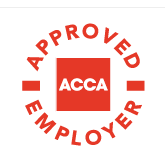Inheritance Tax Planning
Save on Inheritance Tax by making pension payments into a Self-Investment Pension Plan (SIPP)
Funds held in a Self-Investment Pension Plan (SIPP) on the death of the member may be transferred to the ‘nominated beneficiaries’. The member should complete an ‘expression of wish’ form for each pension plan stating to whom they wish the benefit to be paid. The pension plan trustees will usually follow the instructions unless there are exceptional circumstances. An expression of wish form guides the scheme administrators/trustees to exercise at their discretion the stated wishes in the way that the policyholder would have wished. They refer to the most recent form when making a decision.
- If a policyholder dies before the age of 75, either before or after they start to withdraw benefits, the funds held in the SIPP can be transferred to any nominated beneficiary tax-free (before April 2015 this was only possible before the member started to make withdrawals).
- If death occurs after the age of 75 – either before or after they start to withdraw benefits – beneficiaries will be taxed at their marginal rate of tax if funds are taken as a lump sum or income (although it can be transferred to their own SIPP instead).
Irrespective of whether the policyholder dies before or after the age of 75, the funds in the pension plan will not form part of the estate for inheritance tax purposes, therefore, there should be no inheritance tax to pay on the funds in the SIPP.
Use exempt assets relief.
The 4 most common exempt assets are:
- shares quoted on the Alternative Investment Market (min period: two years)
- shares in other unquoted trading companies (min period: two years)
- agricultural land farmed by the owner (min period: two years)
- agricultural land if let under a farm business tenancy (min period: seven years).
All of these assets are not included in the IHT calculation if you held them for the prescribed period of time before death.
For example, Mr. A has net assets of £1m when he dies on 30 June 2019. If all these assets are subject to inheritance tax then the inheritance tax due will be as follows:
| Value of estate at date of death of Mr. A | £1,000,000 |
| Less exempt amount | £325,000 |
| Value of estate subject to IHT | £675,000 |
| Tax due at 40% | £270,000 |
However, if included in the estate of Mr. A, there are some exempt assets which would not be included in the value of the estate when IHT was calculated. For example, Mr. A has exempt assets of £200,000 and other assets of £800,000 when he dies on 30 June 2019.
| Value of estate at date of death of Mr. A | £1,000,000 |
| Less exempt assets | £200,000 |
| Other assets | £800,000 |
| Less exempt amount | £325,000 |
| Value of estate subject to IHT | £475,000 |
| Tax due at 40% | £190,000 |
Therefore, by holding these exempt assets the inheritance tax payable has been reduced by £80,000. For assets to qualify for this exemption two conditions need to be satisfied:
- the exemption only applies for certain types of assets
- these assets need to be held for a minimum period before the date of death.
Consider Equity Release and gifting the cash.
This is a seven-year route to reduce IHT.
The homeowner may take out a commercially available equity release loan and make a cash gift which would be treated as a potentially exempt transfer. The loan does not have to be with an external commercial organisation – if there is a wealthy family member, it may be that the loan could be arranged with that person, provided the borrower has not previously made substantial gifts to him or her. The potentially exempt transfer would become exempt if the transferor survives seven years and the loan would be a liability which reduces the value of the estate of the transferor.
Consider property transfer options
If children live with their parents – and where this is likely to continue for some time – the parents would gift a share of the property to the children. For capital gains this would be a gift to connected parties and so would be deemed to occur at market value for capital gains tax purposes; it may be exempt if covered by the private residence relief of the parents. The children’s acquisition cost would be deemed as the market value at the date of transfer. For inheritance tax purposes this would be a potentially exempt transfer made by the parents.
It would give rise to the potential reservation of benefits provisions, which would occur if the parents receive any benefits, other than a negligible one, which is provided by or at the expense of the children connected with the gift. The risk of reservation of benefits provisions can be minimised if the children do not bear more than a fair share of the running costs of the home (for example the parents could continue to meet all the running costs. The risks can also be reduced by not giving too large a share of the home to the children: to this end, equal ownership by all involved may be advisable.
Make pension contributions to a qualifying non-UK pension scheme
A little more obscure and will need the advice of an independent pension adviser.
A qualifying non-UK pension scheme (QNUPS) is an overseas pension scheme. The main features of a QNUPS are as follows:
- contributions into the scheme do not attract tax relief
- there is no maximum level of contributions, although HMRC may see large contributions as tax avoidance if they affected the individual’s standard of living
- the member can make withdrawals during his/her lifetime (although these withdrawals would be taxable in the UK as normal pension income) with the remaining balance being passed to their chosen heirs on the member’s death
- income and gains made by the QNUPS would be subject to tax in the local country where the QNUPS is located
- the funds in a QNUPS will not be subject to UK inheritance tax unless there is evidence of deliberate tax avoidance
- QNUPS need to meet the conditions in Statutory Instrument 2010/0051 (The Inheritance Tax (Qualifying Non-UK Pension Schemes) Regulations 2010).
Utilise and make sure you consider all claims
Where land or buildings in a deceased person’s estate is sold within three years (sometimes within four years) after death a claim (on Form 38) may be made for the sale value to be substituted for the value on death. Various conditions are required for this relief to be available as explained in Inheritance Tax Act 1984 sections 190 to 198. The claim should be made not more than four years from the date of death.
Payment Reliefs available
And finally, don’t forget that reliefs are also available when paying IHT. Where payment of IHT is due, look at the payment options that may be available. Payment of inheritance tax by installments is possible if an IHT liability arises on the transfer of land and buildings; this applies to any kind of land and property wherever it is situated.
An election in writing to the board of HMRC may be made to pay the tax due by ten equal yearly installments where the first installment is payable on the due date on which the whole tax would otherwise be due. Where the transfer is on death, the first installment is due six months after the end of the month in which death occurs, even if the personal representatives must otherwise pay tax before that date.

You may also like…
Inheritance tax taper relief
Mental health and wellbeing in the workplace
What are self-assessment tax returns?
Implications of CGT
60% pension relief
The next step for MTD







